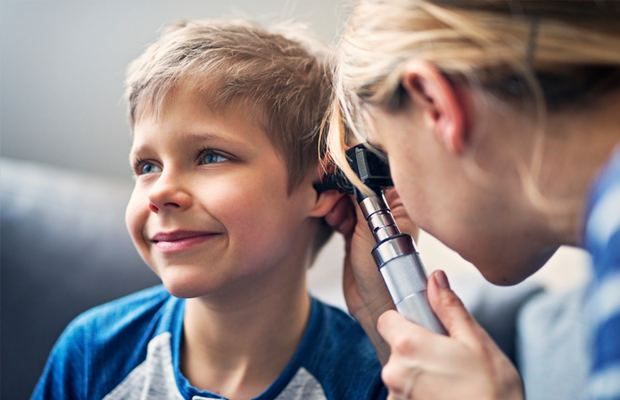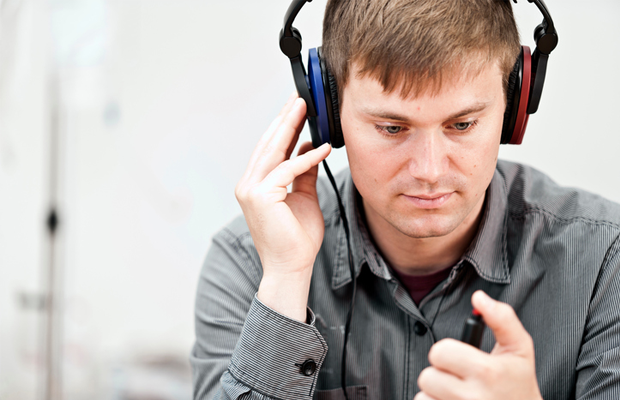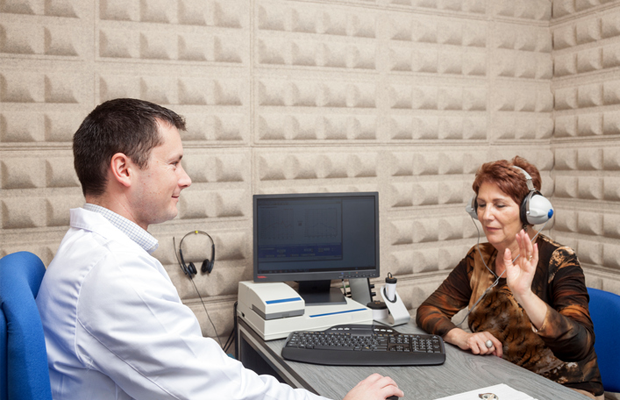An ambulance service said there were 445 handover delays, but the hospital said there were 36.
Daily Archives: 08/02/2018
Health24.com | What happens during a hearing test?
Don’t ignore signs of hearing loss as it can have a profound effect on your quality of life at any age. Hearing loss can hamper development in children and cause serious problems at home and in the workplace for adults.
Fortunately hearing tests are non-invasive and fairly simple procedures. We found out what happens during a hearing test.
Regular checkups
According to the Association of Independent Hearing Healthcare Professionals, you should have your hearing tested regularly. They recommend:
- 18 to 45 years old: every five years
- 45 to 60 years old: every three years
- 60 years and older: every two years
When to go for a hearing checkup
People usually assume that hearing loss only affects the elderly but it can affect anyone at any age.
Do you find it hard to follow conversations in noisy environments or constantly ask people to repeat themselves? Does your family complain that the TV or radio is too loud?
If you answered yes to any of those questions, it might be time to book a hearing test.
What happens during a hearing test?
Always discuss any concerns you may have with your audiologist.
1. Initial examination
Your ears are examined with an otoscope to check for any visual problems in your ear canal or ear drum. If you need a hearing test, it is performed in a quiet, soundproof room with no background noise.

2. Pure tone test
This checks your ability to hear different pure tones, which indicates the degree of hearing loss. You’ll wear headphones and hold a button in your hand – and when you hear a tone, you press the button. Each ear is tested individually and afterwards the results are illustrated as an audiogram, which shows the softest sounds you can hear at different frequencies.

3. Bone conduction test
Sometimes you’ll have a bone conduction test to measure your ability to hear pure tones using a small bone conductor that is placed behind your ear. It checks for any problems in the middle ear cavity.
4. Speech test
This test checks to see whether there are problems with your auditory nerve, which sends signals from your ear to brain, helping translate the sounds you hear into words you can understand as speech.
5. Tympanometry
This test checks the condition of your middle ear and mobility of the eardrum.
6. Set aside some time
A hearing test can take between 60 and 90 minutes.

Image credits: iStock

Health24.com | Diarrhoea numbers up in drought-stricken Cape Town
There has been an increase in cases of diarrhoea among children under the age of five in Cape Town, a city health official said amid fears that good hygiene might be taking a back seat to water saving efforts to avoid Day Zero.
“On 28 January 2018, these were the statistics for the diarrhoea surge season in children under five: 9 019 cases recorded compared to 8 287 last year and 10 614 the year before,” said Doctor Virginia De Azevedo, a manager in the city’s department of public health on Tuesday in response to a request for information.
The city regards the period between November and May as “surge season” for diarrhoea and pneumonia due to the prevalence of certain contagious diseases when temperatures rise.
At the #DayZero media briefing on Monday JP Smith, member of the mayoral committee for safety and security, said the city did not want to lose the gains it had made in protecting children under five from diarrhoea.
On Monday the city’s health officials urged residents and visitors to treat water as precious but to keep washing their hands regularly and bathing themselves with clean drinking water, even though there is a restriction of 50l per person per day in force.
People are currently being encouraged to save as much drinking water as possible, and to reuse the “grey” water collected from washing and bathing where possible to bring the city’s overall water consumption down to 450 million litres a day, from 547 million litres.
Use of clean water encouraged
The city is also reducing water pressure in some areas. There may be disruptions to water supply during the installation of the equipment needed to do this.
Taps at many public and private facilities such as schools and shopping centres have been switched off, with only hand sanitiser available, or one tap with a thin stream of water.
However, the health department stressed that in spite of the water shortage, it is important to use clean drinking water supplied by the city to wash hands, bathe, cook, clean surfaces and for food preparation.
Grey water that has been saved from other household activities such as laundry, cleaning and washing dishes should never be reused for hand washing, bathing, food preparation, cooking and surface cleaning.
Grey water for flushing toilets should not be kept for longer than 24 hours because of the risk of bacteria and contaminants.
Food should not be kept in the open for long periods, and if there is no fridge available for storage, only cook what you need for one meal.
Listeriosis, typhoid
The city said on Tuesday that the number of cases per month of listeriosis had also increased from 11 in December 2017 to 12 in January 2018. The total for 2017 for the city was 38 cases.
For February only one case of listeriosis has been reported so far. Listeria bacteria can be found in soil, water and vegetation in nature, and the disease is treatable. The national Department of Health raised the alarm last year when it said the “usual” average of between 60 to 80 cases nationally had increased to 557 for 2017 (until 9 November).
Most of those cases, 345, were in Gauteng and 71 in the Western Cape.
In 2016 there were 32 cases of typhoid in the city, which dropped to 26 in 2017. In January there were three cases compared with one in January 2017, and six in January 2016. Figures for cholera and pneumonia were not yet available.
Officials warned that water from boreholes and springs and rainwater is also not suitable for drinking, cooking or bathing.
The city’s health department works with the Western Cape health department and has to notify the National Institute of Communicable Diseases of water- and food-borne diseases such as listeria, cholera and food poisoning involving more than four people at once.

NHS pressure: Hospital corridors ‘the new emergency wards’
Warning comes as figures show January was one of the worst months on record for A&Es in England.
Anti-obesity programmes in primary schools ‘don’t work’
A study of six and seven-year-olds found no benefits to diet, activity levels or weight status.
Health24.com | Trusting a stranger may be a case of déjà vu
All human connections and interactions depend on trust. Every time you board a bus, for example, you trust that the driver will get you to your destination in a reliable and safe manner. In order to have a successful relationship with friends, family and partners, we need to feel we can trust them.
Meeting new people may involve a kind of déjà vu, when trusting them depends on how much they look like an old friend, a new study suggests.
Judging strangers
In a series of experiments, New York University researchers found that study participants were more likely to pick photos of strangers who resembled honest people they had met in an earlier experiment than photos of strangers who reminded them of dishonest people they’d encountered in an earlier game.
“We make decisions about a stranger’s reputation without any direct or explicit information about them based on their similarity to others we’ve encountered, even when we’re unaware of this resemblance,” said study senior author Elizabeth Phelps. She’s a professor in NYU’s department of psychology.
“This shows our brains deploy a learning mechanism in which moral information encoded from past experiences guides future choices,” she added in a university news release.
Like Pavlov’s dog
The research, which was led by Oriel FeldmanHall, as a post-doctoral fellow at NYU, was published in the Proceedings of the National Academy of Sciences.
FeldmanHall is now an assistant professor in Brown University’s department of cognitive, linguistic, and psychological sciences.
“Our study reveals that strangers are distrusted even when they only minimally resemble someone previously associated with immoral behaviour,” Professor FeldmanHall said.
“Like Pavlov’s dog, who, despite being conditioned on a single bell, continues to salivate to bells that have similar tones, we use information about a person’s moral character – in this case whether they can be trusted – as a basic Pavlovian learning mechanism in order to make judgments about strangers,” she explained.
Image credit: iStock
NEXT ON HEALTH24X

Health24.com | This is the number of cigarettes per day that raises your risk of heart disease
Pretty much everyone is aware that smoking is bad for you. But unfortunately, some people still do it anyway.
Smoking has been linked to a huge range of health issues, like asthma, lung disease, stroke and cancer, and a scary new study published in The BMJ shows that it doesn’t take much smoking to impact your heart health.
For the study, researchers analysed 141 cohort studies from 1946 to 2015 on smoking and heart disease to try to figure out how many daily cigarettes it takes to raise your risk of heart disease and stroke.
The researchers broke data down into people who smoked one, five or 20 cigarettes a day, and compared it with people who never smoked.
Read more: “I used to smoke – did I screw up my fertility?”
Here’s what they found: Having just one cigarette a day significantly increases your risk of heart disease and stroke.
For men, smoking one cigarette a day raised a person’s risk of heart disease by 48% on average over a non-smoker, while smoking 20 cigarettes a day doubled the risk.
It was even worse for women: Having one daily cigarette increased their heart disease risk by 57%, while smoking 20 cigarettes a day raised the risk by 2.8 times.
The researchers point out that, while it’s good to cut back on smoking if you’re a heavy smoker, it’s much, much better to cut out the habit entirely.
“Smoking only about one cigarette per day carries a risk of developing coronary heart disease and stroke much greater than expected: around half that for people who smoke 20 per day,” the researchers wrote in the conclusion. “No safe level of smoking exists for cardiovascular disease.”
Read more: 6 steps that’ll help you to quit smoking
In an accompanying editorial, Kenneth Johnson, an adjunct professor of public health at the University of Ottawa, writes that any exposure to cigarette smoke is “too much”.
If you’re rethinking your smoking habit or trying to urge a loved one to do the same, just know that you’ll have a much better impact on your health if you completely break the habit.
This article was originally published on www.womenshealthmag.com
Image credit: iStock





